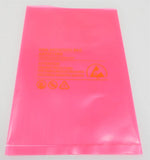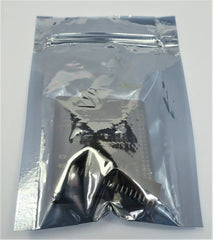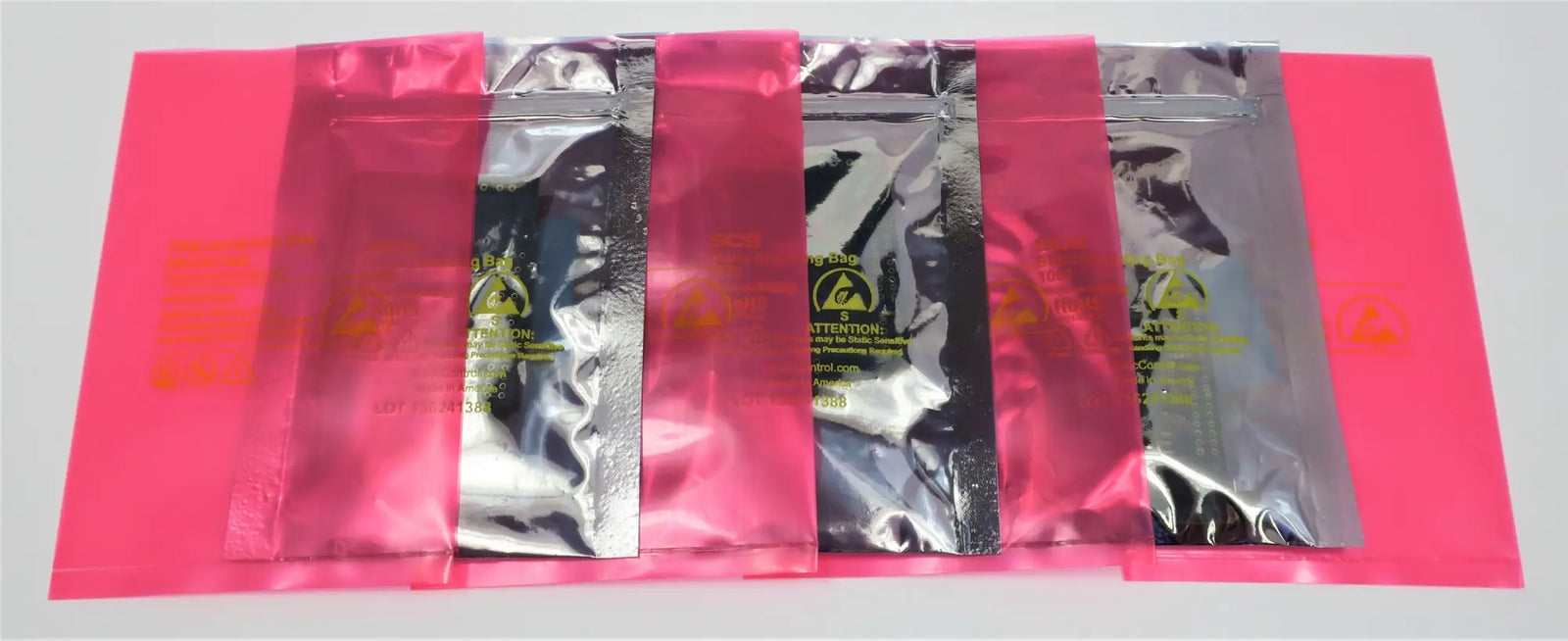Have you ever bought an electronic or computer component and found it wrapped in an anti-static bag and wondered why we use them? Or how do they work?
A lot of electronic components are very sensitive and are at risk of being damaged when it comes to electrostatic discharges. This static electricity can cause major damage to the internal circuitry of components or microprocessors rendering them useless or “fried”.
Tribocharging is the most common factor for the buildup of static electricity. We can define tribocharging as a form of contact electrification, this is where materials can become electrically charged when they come into frictional contact with another material.
To prevent our components from becoming damaged we use anti-static bags to help shield them from this. The two most common types of anti-static bags used are Dissipative Anti-static bags and Static-Shielding bags, however, most people will just refer to them under the umbrella term “Anti-static bag”.
Dissipative Anti-static bags:
These types of bags are made up of a polyethylene plastic material which are most commonly pink or black in colour. Polyethylene plastic does not create or hold any form of charge, this means that if the contents inside the bag move or anything externally rubs against it, the tribocharging effect does not take place so no static charge is made.

In the transport of electronics, polyethylene plastic might not only be used as bags. Polyethylene plastic is also used to create polyethylene bubble wrap and poly-foam for an added layer of protection in packaging.
However, while these bags are effective at preventing the buildup of static electricity, they will not protect the electronic components from a direct static discharge so are only be used on components that cannot be damaged by static discharges, but could be brought into an environment where the build up of a static discharge could affect more sensitive components.
Static-Shielding bags:
Being made up of multiple layers of different materials, these bags are more heavy duty and bulkier than dissipative anti-static bags. Static-Shielding bags simulate a Faraday cage effect for the electronics inside them, completely protecting them from a direct electrostatic discharge and building up static electricity. Static-Shielding bags are used for sensitive electronics that could be damaged by an electrostatic discharge.

The first (inner) layer of this bag is made up of the same dissipative polyethylene plastic as dissipative bags which provides a soft layer for the electronic component to sit on while also preventing the buildup of static electricity that could be created by the movement of the component inside.
The second (middle) layer of this bag is made of aluminium which provides a layer of shielding against electrostatic discharges, this layer is used as a conductor to safely take a direct static charge and ground it, meaning that the contents inside the bag remain safe.
The third (outer) layer of this bag is made up of a form of polyester with a dissipative coating similar to that found on the polyethylene plastic. This layer is used to add another layer of protection to the bag and its contents as it helps to provide protection to the middle layer and stop any buildup of static electricity on the outside of the bag.

